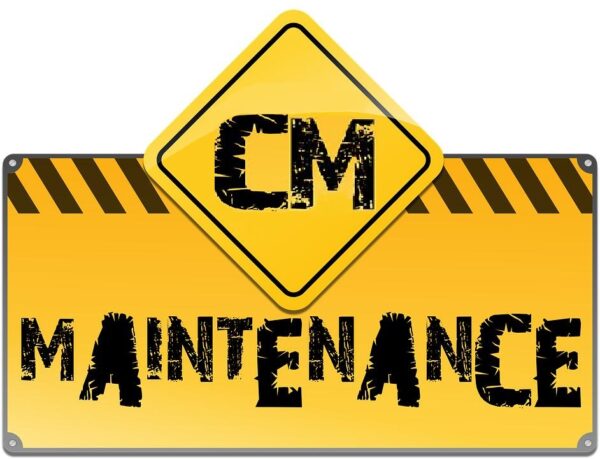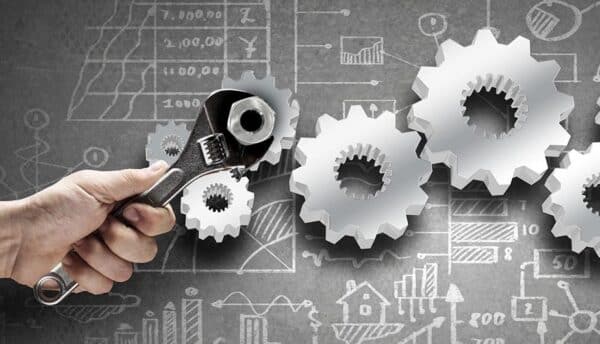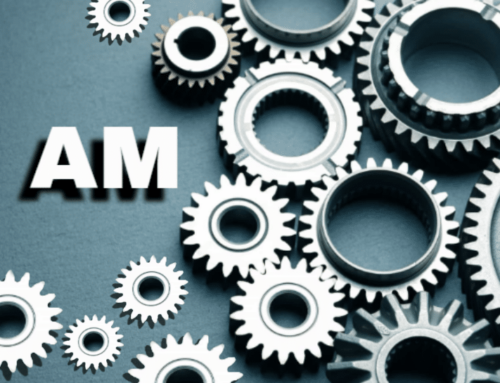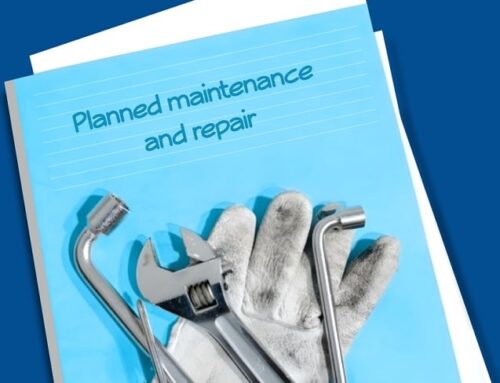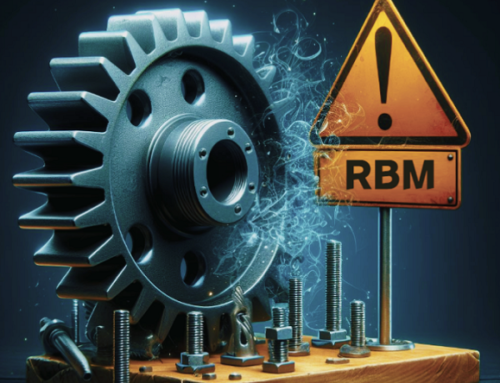Corrective maintenance and repair (CM)
Corrective maintenance and repair(CM) is a maintenance method whose purpose is to fix the breakdowns and defects in the equipment. In this method, when a breakdown occurs and the equipment malfunctions or stops, repairs are made. In other words, Corrective maintenance and repair means repairing the equipment after failure.
When a failure occurs in the equipment, corrective maintenance and repair is done to repair and restore the equipment to a normal state. This method is usually performed as an event and in response to failures, and its main goal is to fix the problem and return the equipment to optimal performance.
-
Steps of Corrective maintenance and repairs:
- Failure detection: In this step, the failure in the equipment is identified and diagnosed, which can be done by observing the failure symptoms, reporting users or systems, analyzing functions, or inspecting the equipment.
- Failure analysis: After identifying the equipment, the causes and factors causing the failure are identified. Failure analysis includes detailed problem analysis, performance history, performance data review, and probable cause analysis. The purpose of the analysis is to identify the main problems and provide appropriate solutions to correct them.
- Repair planning: In this stage, planning for repairs is done, which includes time planning, required resources such as spare parts and tools, and the allocation of manpower to carry out repairs. Detailed planning related to problematic equipment helps you to Perform maintenance activities optimally.
- Repair implementation: After planning, the main stage is the technical repairs of the equipment. This includes replacing worn parts, repairing defective parts, designing and repairing devices and systems. The purpose of this step is to return the equipment to its original and normal function.
- Testing and Testing: After the repairs are done, the equipment is tested and tested. This test is to ensure that the repairs are done correctly and the equipment is functioning properly.
- Start-up and return to normal operation: After successful testing and testing, the equipment will return to normal operation and start-up. Make sure the breakdown is complete and the equipment is working properly. Perform appropriate tests and tests on equipment characteristics.
- Monitoring and maintenance: from equipment setup, monitoring and maintenance for their performance. This includes monitoring equipment performance, logging performance data, and reviewing warnings and warning signs. With careful and regular monitoring, you can identify and correct problems in time.
- Recording and reporting: At this stage, all repairs are recorded and reported. This includes failure details, failure analysis, repairs made, parts replaced and any other important points to be recorded. This information can be used for future analysis, maintenance planning and equipment performance improvement.
- Update maintenance plans: Maintenance plans are updated with experience and learnings gained from maintenance. Information gained from similar equipment, performance data analysis, and lessons learned are used to make optimizations in your maintenance programs.
- Training and information: Ensure that employees responsible for maintenance and repairs have adequate training and information on proper maintenance and repair procedures. Regular training and updates on equipment and maintenance procedures can help reduce errors and improve performance.
By implementing these steps and paying attention to details, you can implement Corrective maintenance and repairs in your equipment and increase their useful life.
-
Advantages and disadvantages of Corrective maintenance and repair:
Advantages:
- Reduced cost: One of the main benefits of corrective maintenance and repair is cost reduction. In this method, only when a failure occurs and the equipment needs to be repaired, repairs are made. This means that maintenance and repair costs are reduced as pre-planned costs.
- Resource optimization: By using Corrective maintenance and repair, resources are used optimally. The time and resources required for repairs are only allocated when a failure has occurred, and as a result, your resources are used for other activities.
- Shorter repair time: In Corrective maintenance and repair, repairs are done only when a failure has occurred. This means that repairs are done quickly and equipment is back up and running quickly. This can reduce equipment downtime and negative impacts on other activities.
Disadvantages:
- Unknown risks: In the corrective maintenance and repair method, repairs are made only when a failure has occurred. This means that risks that preceded the potential failure may not be identified and their importance may not be considered. This issue can increase the risks and more serious consequences in times of failure.
- Sudden stop: In this method, the equipment works until a failure occurs. This means that sudden stops in activities and unexpected developments may occur. This issue can disrupt planning and settings and cause dissatisfaction among users and stop related activities.
- Lack of prevention: In the Corrective maintenance and repair method, the focus is more on fixing breakdowns and immediate repairs, and less attention is paid to the prevention of breakdowns. This can lead to increased breakdowns and the need for more repairs in the future. Also, lack of prevention can increase maintenance and repair costs in the long run.
- Need for time and technical capabilities: Corrective maintenance and repair method requires technical capabilities to diagnose and fix failures. This can require more time and money for the training and technical talent required. Also, some complex and sensitive equipment may require special expertise and experience that may not be readily available.
In general, Corrective maintenance and repair can help to reduce costs and optimize resources, but may cause sudden stops and failure prevention. Also, it requires more technical capabilities and time. To choose the best method of maintenance and repairs, the specific needs and conditions of the organization and equipment should be considered and appropriate decisions should be made.
-
The main differences between corrective maintenance and repair and preventive maintenance and repairs:
Corrective maintenance and repair(CM) and preventive maintenance and repairs(PM) are two different methods in the management of equipment and technical facilities. Below we explain the main differences between these two methods:
- Purpose:
Corrective maintenance and repair: The main purpose of this method is to repair equipment and technical facilities after failure. In other words, corrective repairs are performed in response to breakdowns and technical glitches.
Preventive maintenance and repairs: The main goal of this method is to prevent breakdowns and maintain the optimal performance of the equipment. In this method, periodic and planned maintenance and repairs are carried out before failure occurs.
- Action time:
Corrective maintenance and repair: Corrective maintenance measures are carried out after failure and in response to it. This means that repairs are made only when problems occur.
Preventive maintenance and repairs: Preventive maintenance measures are carried out before the failure occurs and are planned. Periodic and regular repairs are done as a preventive measure to detect and fix possible failures and problems before they occur.
- Costs:
Corrective maintenance and repair: The costs of this method appear in the form of availability and in response to breakdowns and technical problems. In other words, the costs are mostly done in the post-breakdown and corrective repair phase.
Preventive maintenance and repairs: The costs of this method are mostly done in the stage before the breakdown and in periodic and preventive repairs. These costs are usually lower than the cost of corrective repairs.
- Effect on performance:
Corrective maintenance and repair: In this method, the performance of the equipment is put in a state of failure. In other words, until the repair, the equipment is usually not usable and the performance of the system is reduced.
Preventive maintenance and repairs: By carrying out periodic and preventive maintenance and care, the performance of the equipment is optimized and possible failures and problems are detected and fixed before they occur. This method helps maintain better performance and reduce unplanned downtime.
- Planning:
Corrective maintenance and repair: This method usually has no prior planning and is done in response to breakdowns and technical problems. Most corrective repairs are done immediately.
Preventive maintenance and repairs: This method includes prior planning for periodic and preventive repairs. Scheduling and planning of maintenance and repairs are done regularly and before the failure.
In general, we found that corrective maintenance and repair is done in response to breakdowns and technical problems, while preventive maintenance and repairs are planned and performed before a breakdown occurs in order to maintain the optimal performance of the equipment and prevent possible breakdowns and problems. And it can be said that these two methods are completely opposite.

